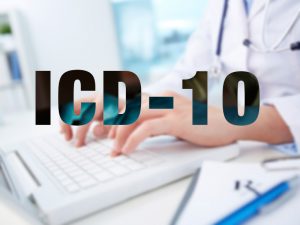
Imagine, you visit your doctor after a long wait as it took a lot of time to get an appointment and you forgot your reports at home. You don’t want to miss this one chance of meeting your doctor as getting another appointment would mean a wait for another couple of days. What will you do in that case? Now think if the entire record of your disease is encrypted in one single code that you can get from the clinics health directory that provides you with the platform where you can get all the relevant information about the disease or the injury you are suffering from. This is now possible with the advancements in the medical standard associated with WHO under ICD-10 codes.
Key facts associated with ICD
Emphasizing on the US, ICD-10 is split into two systems:
- ICD-10-CM: This is used for the diagnostic coding.
- ICD-10-PCS: This is implemented for inpatient hospital procedure coding.
- ICD is widely used in researches and clinical care to give an idea about the diseases and study their pattern. It also helps in managing the healthcare, calculate the effective outcomes and then allocate the resources.
- ICD gives a standard idea about the mortality and morbidity rates.
- The mortality data generated by the ICD denotes the health status of the country. It also keeps a check on the number of deaths and the disease rates.
Purpose of ICD:
- ICD is an international standard for reporting the health and disease conditions. It provides the world a platform to share as well as compare health information using a common language.
- ICD holds all the information about the diseases, any health condition as well as the injuries. All the information is listed in such a comprehensive way that everything gets covered.
- It gives a platform for sharing the health information among the hospitals situated in different locations and countries.
- ICD helps in keeping a count of the diseases and deaths, their reasons and influences on general health status.
Who can avail ICD-10 benefits?
The main areas where ICD is taken into practice includes the research areas. General physicians, insurance policy makers, health program and information managers can also avail the benefits of ICD-10.
ICD-10 Code structure:
ICD-10 CM diagnosis have codes ranging between 3 to 7 characters.
- The initial three characters of an ICD-10 code tells about the category of diagnosis. For example if we consider S86.011.D; the letter S tells us about the diagnosis related to “injuries, poisoning or any certain causes that are related to single body regions externally.” S along with 8 and 6 tells that it indicates an “injury of tendon or muscle in the lower portion of the leg.
- The next two characters “0”, “1”, “1” specifies the diagnosis of the ” strain in the right Achilles tendon.”
- The last character that is the seventh character tells us about the basic difference between ICD-0 and the ICD-10 as ICD-9 did not include the seventh character. The seventh character tells about the treatment and care.
Here in this example, the seventh character deals with the injury. The character D specifies the phase when the patient is receiving routine care during the healing time of recovery.
Why should you go for ICD-10 procedures?
The reason to go for ICD-10 can be divided into three categories:
- Operational:
- It gives an elaborate idea about the patient’s condition and helps in giving improved healthcare teams.
- It targets on the capital investments to meet the needs of the specific patient’s condition.
- Financial:
- This provides the basic data for comparison and utilization benchmarking.
- Reduces the risks associated with an audit by implementing the diagnosis codes with high specificity that is supported by the clinical research documentation.
- Clinical:
- Since, better data is collected and evaluated, it helps in taking better decisions.
- Gives a broader platform for research and clinical trials.